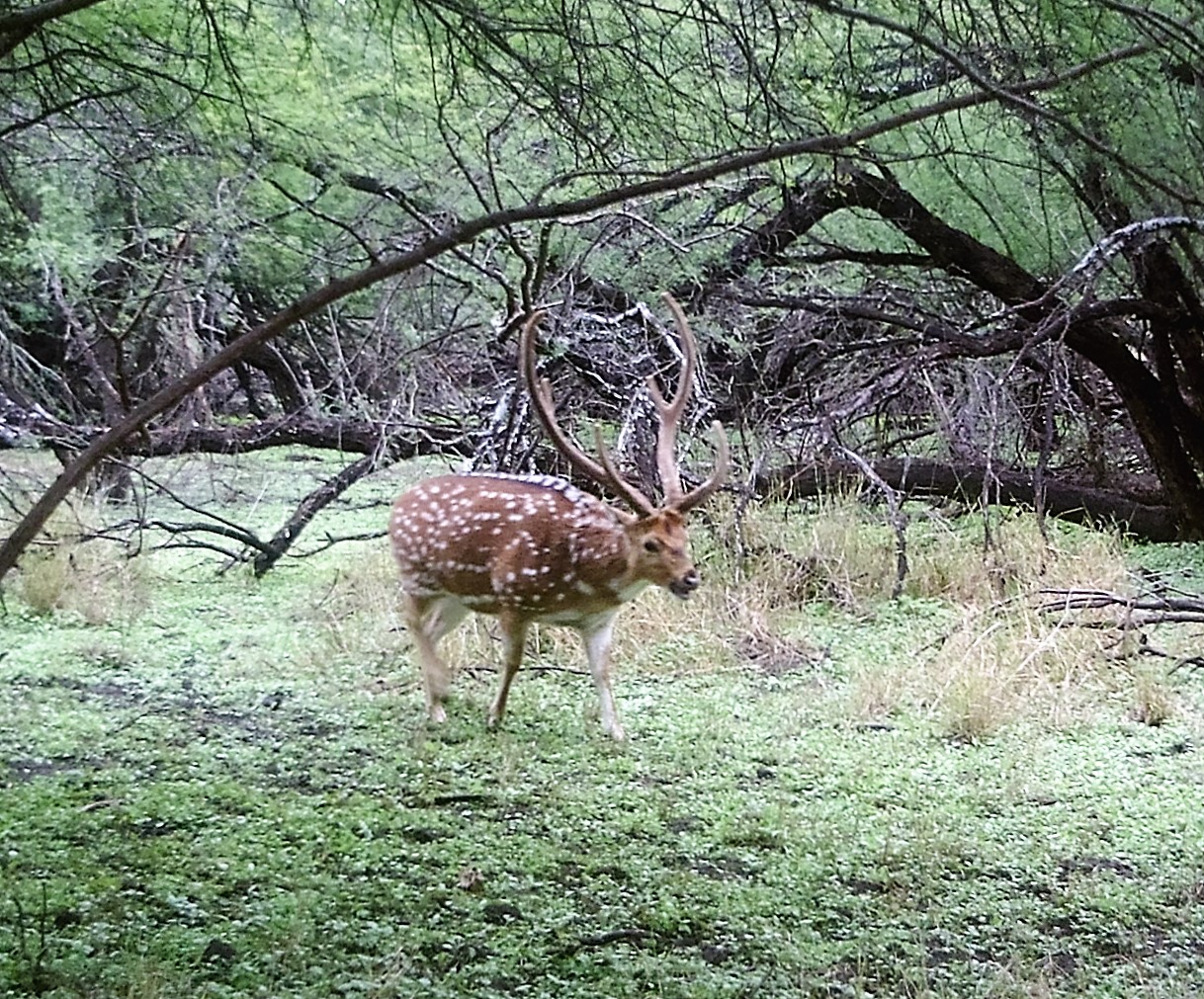Primarily found in
India, Nepal, & Sri Lanka. One of the most common free-ranging exotics in Texas.
Introduction to the Axis
Axis deer are best identified by their burnt orange coat with white spots (similar to a whitetail fawn) and a black streak running the length of their spine. White throat patches are prominent in males and females. Males sport large antlers that grow skyward, forking at the base and again inside each main beam. Most axis bucks aspire to be 6 points (3 on left & 3 on right), but non-typical 7th and 8th+ points near the bases are not uncommon. Adult male antlers can reach lengths of just over 40", but 28-36" is most common. Females do not normally grow antlers. Live weights range from 150 to 250 lbs in mature males; 90 to 150 lbs in adult females.
Axis behavior
Axis tend to be cautious by nature and show many similarities to the daily activity patterns of whitetail - becoming most active around dusk and dawn. They can, however, be seen in open areas during warmer parts the day, bedding in groups in sunny conditions. Groups consisting of young and old animals, males and females are common. Older males tend to become more isolated. Axis use several vocalizations to communicate. Both sexes emit alarm calls sounding much like a high-pitch bark. Males often bellow loudly during breeding season. Male antlers are shed and regrown annually. Antler cycles are often irregular depending on what time of the year they were born, with some sporting hardened antlers while others are still in different stages of growth. Like most antlered exotics, axis males fight for dominance during the rut with hardened antlers. They also fight during velvet antler growth stages by standing on their hind legs and bat at each other with their front hooves (See video below). Axis are known to be good swimmers, showing no fear of water.
Axis food and eating habits
Feed primarily on grass, but diet is augmented with browse and sedges.
Axis average life span
Average 9 - 13 years in the wild with 20 yrs+ documented in captivity.
